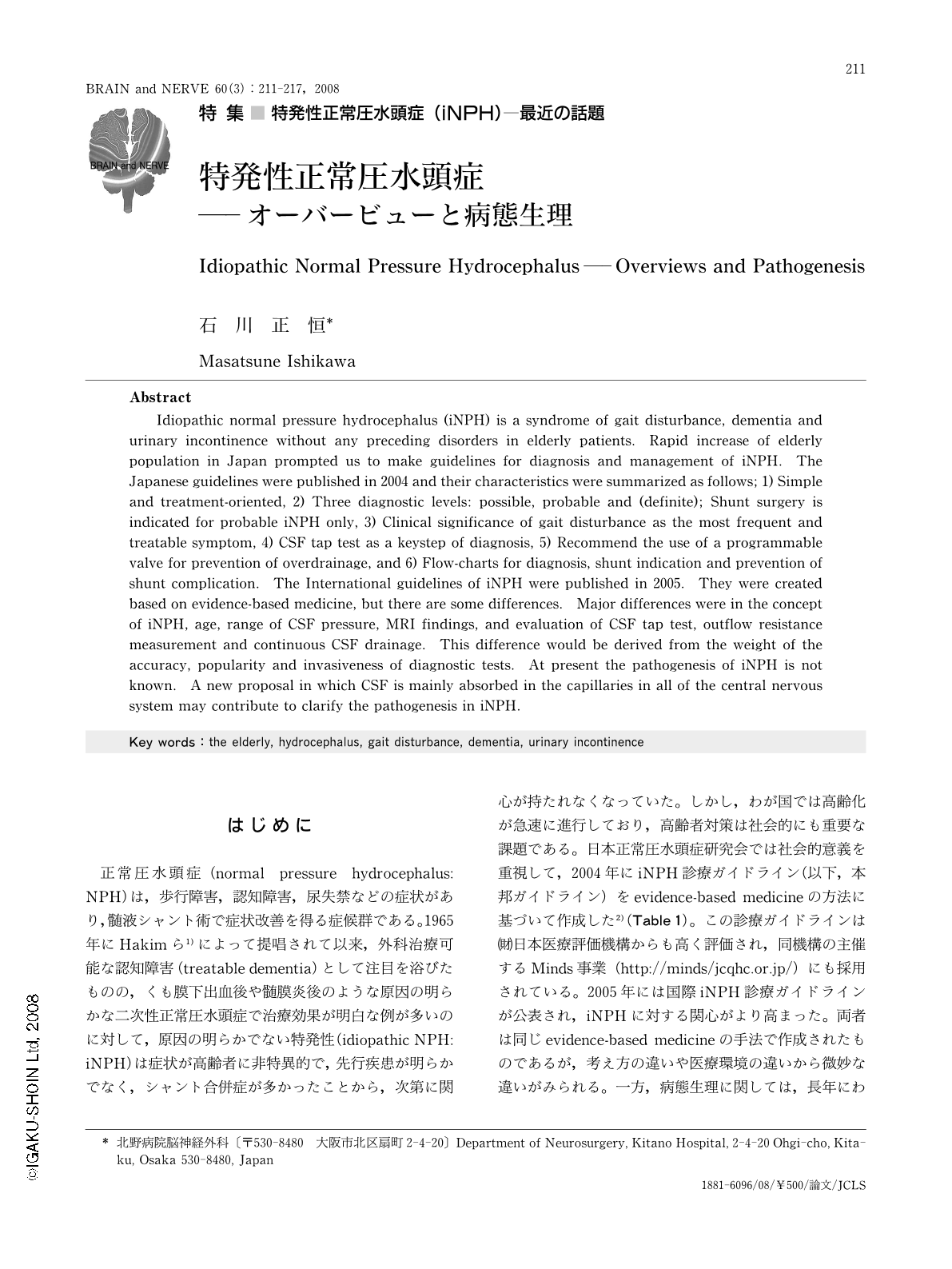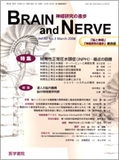Japanese
English
- 有料閲覧
- Abstract 文献概要
- 1ページ目 Look Inside
- 参考文献 Reference
はじめに
正常圧水頭症(normal pressure hydrocephalus: NPH)は,歩行障害,認知障害,尿失禁などの症状があり,髄液シャント術で症状改善を得る症候群である。1965年にHakimら1)によって提唱されて以来,外科治療可能な認知障害(treatable dementia)として注目を浴びたものの,くも膜下出血後や髄膜炎後のような原因の明らかな二次性正常圧水頭症で治療効果が明白な例が多いのに対して,原因の明らかでない特発性(idiopathic NPH: iNPH)は症状が高齢者に非特異的で,先行疾患が明らかでなく,シャント合併症が多かったことから,次第に関心が持たれなくなっていた。しかし,わが国では高齢化が急速に進行しており,高齢者対策は社会的にも重要な課題である。日本正常圧水頭症研究会では社会的意義を重視して,2004年にiNPH診療ガイドライン(以下,本邦ガイドライン)をevidence-based medicineの方法に基づいて作成した2)(Table1)。この診療ガイドラインは(財)日本医療評価機構からも高く評価され,同機構の主催するMinds事業(http://minds/jcqhc.or.jp/)にも採用されている。2005年には国際iNPH診療ガイドラインが公表され,iNPHに対する関心がより高まった。両者は同じevidence-based medicineの手法で作成されたものであるが,考え方の違いや医療環境の違いから微妙な違いがみられる。一方,病態生理に関しては,長年にわたって髄液はくも膜顆粒で吸収されると信じられてきたが,MRIなどの新たな技術革新の波に乗って,髄液のほとんどは中枢神経系の至るところの毛細血管から吸収されるという仮説が提示されるようになり,交通性水頭症の病態生理について再考が迫られている。
本稿では初めにiNPHに関するわが国の診療ガイドラインの概要を述べ,次いで,国際ガイドラインとの比較を述べ,最後に最近の病態生理をめぐる論争について概説する。
Abstract
Idiopathic normal pressure hydrocephalus (iNPH) is a syndrome of gait disturbance, dementia and urinary incontinence without any preceding disorders in elderly patients. Rapid increase of elderly population in Japan prompted us to make guidelines for diagnosis and management of iNPH. The Japanese guidelines were published in 2004 and their characteristics were summarized as follows; 1) Simple and treatment-oriented, 2) Three diagnostic levels: possible, probable and (definite); Shunt surgery is indicated for probable iNPH only, 3) Clinical significance of gait disturbance as the most frequent and treatable symptom, 4) CSF tap test as a keystep of diagnosis, 5) Recommend the use of a programmable valve for prevention of overdrainage, and 6) Flow-charts for diagnosis, shunt indication and prevention of shunt complication. The International guidelines of iNPH were published in 2005. They were created based on evidence-based medicine, but there are some differences. Major differences were in the concept of iNPH, age, range of CSF pressure, MRI findings, and evaluation of CSF tap test, outflow resistance measurement and continuous CSF drainage. This difference would be derived from the weight of the accuracy, popularity and invasiveness of diagnostic tests. At present the pathogenesis of iNPH is not known. A new proposal in which CSF is mainly absorbed in the capillaries in all of the central nervous system may contribute to clarify the pathogenesis in iNPH.

Copyright © 2008, Igaku-Shoin Ltd. All rights reserved.


